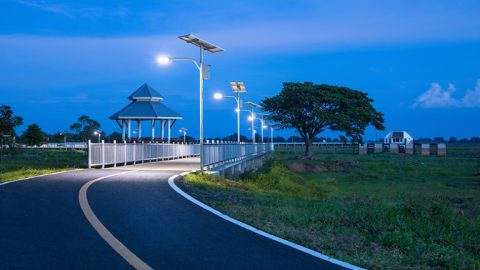Selecting the appropriate lightning arrester is a critical decision when it comes to safeguarding structures and equipment from the devastating effects of lightning strikes. Lightning is a natural phenomenon that can cause fires, damage electronic devices, and pose serious safety risks. In this article, we will explore various types of lightning arresters, their operational principles, ideal applications, and considerations for choosing the right one for your specific needs. By the end, you’ll be well-equipped to make an informed decision to protect against the unpredictable forces of nature.
How Lightning Arresters Work?
Lightning arresters play a vital role in ensuring the safety of buildings, equipment, and people. Here’s why selecting the right one is crucial:
- Protection: Lightning arresters divert the electrical energy from a lightning strike safely into the ground, preventing damage to structures and equipment.
- Safety: Lightning strikes can cause fires, electrical surges, and even fatalities. The right lightning arrester can mitigate these risks.
- Cost Savings: Installing the appropriate arrester can prevent costly damage to electrical systems, appliances, and infrastructure.
Factors Influencing the Choice of Lightning Arrester
Several factors influence the selection of a lightning arrester, including:
- Location: Different regions experience varying lightning frequencies and intensities, requiring tailored protection measures.
- Building Type: The type of structure, such as residential, commercial, or industrial, impacts the choice of lightning arrester.
- Regulations: Local building codes and safety standards may dictate the type of arrester required.
Rod Lightning Arresters
Rod lightning arresters, also known as lightning rods, are one of the oldest and most recognizable forms of lightning protection. They consist of a metal rod mounted on a structure’s roof, connected to a conducting cable that leads to a grounding system.
When lightning approaches, the rod acts as a preferred path for the electrical discharge. It captures the lightning strike and directs it safely into the ground through the grounding system.
Ideal Applications and Limitations
Ideal Applications:
- Residential buildings
- Smaller structures
- Historical buildings
Limitations:
- Limited radius of protection
- May not be suitable for tall structures
- Requires proper installation and maintenance
Early Streamer Emission (ESE) Lightning Arresters
How ESE Lightning Arresters Work?
Early Streamer Emission lightning arresters are designed to enhance the radius of protection compared to traditional rod lightning arresters. They contain an ionisation system that emits streamers, which extend toward the approaching lightning, providing an earlier trigger for the arrester.
When a lightning strike is imminent, the ESE lighting arrester triggers a streamer, guiding the lightning towards the arrester, which then safely conducts the discharge into the ground.

Advantages:
- Extended radius of protection
- Suitable for tall structures
- Improved early warning
Considerations:
- Proper maintenance required
- Maybe costlier than traditional rods
- Expert installation recommended
Franklin Lightning Rods
Overview of Franklin Rods
Named after Benjamin Franklin, who famously conducted experiments with lightning and electricity, Franklin rods are a type of lightning arrester that employs a network of conductive rods and grounding to protect structures.
Franklin rods are designed to capture lightning strikes and provide a low-resistance path for the electrical energy to dissipate safely into the ground.

Use Cases:
- Commercial and industrial buildings
- High-risk areas with frequent lightning activity
- Tall structures
Suitability:
- Effective for high lightning activity regions
- Suitable for tall buildings and industrial facilities
- Requires professional installation
Comparative Analysis
Let’s compare the three lightning arrester types:
- Rod Lightning Arresters: Simple, cost-effective, but limited protection radius.
- ESE Lightning Arresters: Extended protection radius, suitable for tall structures, but requires maintenance.
- Franklin Lightning Rods: Effective for high lightning activity re gions, suitable for tall buildings, professional installation recommended.
Selection Guidelines
A. Factors to Consider (Location, Building Type, Regulations)
- Location: Assess the lightning risk in your area based on historical data.
- Building Type: Consider the type and size of the structure you need to protect.
- Regulations: Adhere to local building codes and safety standards.
B. Case Studies Illustrating Selection Criteria
- Case Study 1: A residential area with occasional lightning strikes benefits from rod lightning arresters due to cost-effectiveness.
- Case Study 2: A high-rise commercial building in a lightning-prone region opts for ESE lightning arresters to extend protection.
- Case Study 3: An industrial facility with sensitive equipment chooses Franklin rods for maximum protection.
Picking the right lightning arrester is essential to safeguard structures and equipment from the destructive power of lightning strikes. Consider the factors such as location, building type, and regulations when making your decision. Whether you opt for rod lightning arresters, ESE lightning arresters, or Franklin rods, prioritise safety and adhere to best practices in installation and maintenance. By doing so, you can enjoy peace of mind knowing you’ve taken proactive steps to protect against the unpredictable forces of nature.
































